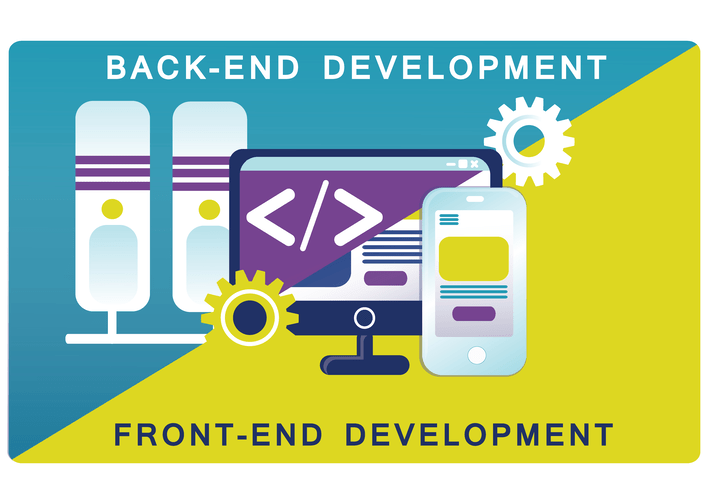Instead of one-off tests or scheduled deployments, each function occurs on an ongoing basis. A single source of truth that reports vulnerabilities and remediation provides https://www.globalcloudteam.com/ much-needed transparency to both development and security team. It can streamline cycles, eliminate friction, and remove unnecessary translation across tools.
They can take advantage of this and release malware into your application to exploit the vulnerability within hours of patch release. Security has always been important for organizations that create software. The need for security is only getting more intense, however, as malicious actors grow in sophistication. At the same time, software makers face pressure to release code at a faster pace than ever before. This requirement is potentially at odds with security, but DevSecOps offers a way forward.
How to Implement DevSecOps
And the DevSecOps best practices ensure smooth transition from DevOps to DevSecOps mindset. We will find the answer to the above question in the below sections of the blog. Before that, you must know that DevSecOps focuses on people, processes and technology. This blog post is dedicated to people and their changing roles in cloud adoption. To help industry and government improve the security of their DevOps practices, NIST has initiated a DevSecOps project.

Everyone involved with software development and operations should be aware of security fundamentals and have a sense of ownership in the results. The philosophy “security is everyone’s responsibility” should be a part of your organization’s DevSecOps culture. A second challenge is finding the right security tooling and integrating it into your DevOps workflow. The more automated your DevSecOps tooling is, and the more integrated it is with your CI/CD pipeline, the less training and culture-shifting you need to do.
Why you need static and dynamic application security testing in your development workflows
Although you’ll most certainly come across some hiccups when you start, implementing DevSecOps can do a world of good for your organization in the long run. That’s why hiring a good solution provider like Plutora can make all the difference. Adapt governance to meet engineering teams where they are for continuous compliance and automatic auditability.
Security isn’t handled at the end passively by an external team because it is a requirement anymore; instead, security is enhanced proactively, dealt with much sooner, as soon as issues occur. The event then, in turn, triggers a simple piece of code to execute. If it’s not private, update the permission to private, then send a push notification to the Slack channel of that team who created this bucket in the first place. In the DevSecOps way, even before the start of the project, during the planning phase, you would figure out the corporate policies regarding data privacy.
What Is the Ideal Workflow for DevSecOps?
When a team member uploads a piece of code, I strongly suggest that you enable automated testing for security on your code dependencies and core. When you are developing an application, in most cases you will use open source technologies. Docker is a great helper at this phase since it automates the infrastructure and services deployments on local machines. So when you are using this ready-to-go docker environment, make sure that you are using the most recent/updated versions of the Docker Images and scan them for vulnerabilities. Even the images from official providers have vulnerabilities that need to be patched. In traditional software development processes, security is often treated as an afterthought and only considered during testing.

It’s the seamless integration of security testing and protection throughout the software development and deployment lifecycle. DevOps is a methodology under which developers and operations teams work together to create a more agile, streamlined software development and deployment framework. DevSecOps aims to automate key security tasks by embedding security controls and processes into the DevOps workflow. DevSecOps extends the DevOps culture of shared responsibility to include security practices.
DevSecOps skills
Ideally, an alert tool will analyze, prioritize, and notify the team of anomalies after they are prioritized and verified as real incidents. When the team is notified, they can quickly investigate the incident and respond. Service mesh—offers automated network segmentation and visualization, authentication and authorization https://www.globalcloudteam.com/services/devsecops/ for container-based applications and microservices. Infrastructure as Code —creates human-readable code templates that define how environments should be deployed and automatically provisions resources based on these templates. This can be used to bake security into resources as they are deployed.
- Extending DevOps processes to address security is an evolutionary step, not a revolutionary one.
- As DevSecOps integrates vulnerability scanning and patching into the release cycle, the ability to identify and patch common vulnerabilities and exposures is diminished.
- Long development cycles are making it difficult to meet customer or stakeholder demands.
- To detect new zero-day vulnerabilities, you need to monitor existing applications in your production environment.
- Visibility—the ability to understand what is running in the environment, identify security vulnerabilities and threats and respond to them.
It outlines why having a DevSecops approach not only makes the software more secure but also why it can speed up the development process. Integrate tools that speed up the process and help automate security. Teams that work with a DevOps mindset use several tools to automate software delivery, and each tool has its own pros and cons. Find a security scanning solution that fits well with your current code deployment and delivery tools. In many compliance standards, testing, patching and monitoring the application are components in cybersecurity requirements.
How Do DevOps and DevSecOps Differ?
If development, operations and security teams have been working separately, they have likely been using different metrics and tools. Consequently, they might disagree on where to integrate tools, as it’s not easy to bring together tools from various departments and integrate them on one platform. The challenge is selecting the right tools and integrating them properly to build, deploy and test software in a continuous manner.

And regardless of a particular organization’s technology stack or development processes, virtually every team is expected to ship faster and more frequently than in the past. The test phase uses dynamic application security testing tools to detect live application flows like user authentication, authorization, SQL injection, and API-related endpoints. The security-focused DAST analyzes an application against a list of known high-severity issues, such as those listed in the OWASP Top 10.
What Is Development Security Operations (DevSecOps)?
Once you decide AWS Local Zones are right for your application, it’s time for deployment. Access an exclusive Gartner analyst report and learn how AI for IT improves business outcomes, leads to increased revenue, and lowers both cost and risk for organizations. Red Hat OpenShift A container platform to build, modernize, and deploy applications at scale.